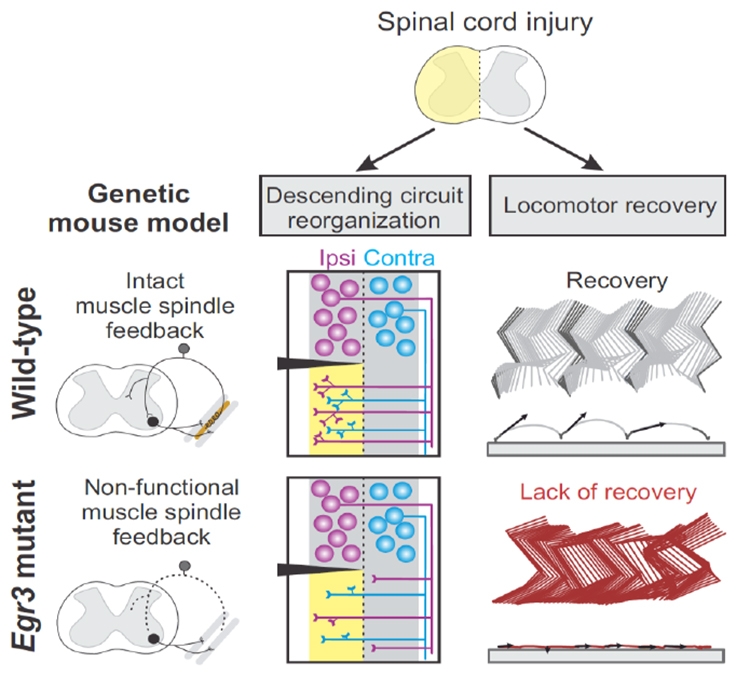You are here
Where Are My Legs?: Spatial and Temporal Requirements of Proprioception for Locomotor Recovery After Spinal Cord Injury
Speakers
Proprioceptive feedback from muscle spindles and tendons is essential for locomotor control and recovery after spinal cord injury. Using an intersectional approach of mouse genetics and circuit manipulation techniques, we assessed age-dependent plasticity of the sensorimotor circuits. Removal of the feedback circuit in adults more significantly impacts coherent locomotor performance than during development, indicating age-dependent circuit plasticity can compensate for lack of feedback. Following spinal cord injury, elimination of proprioceptive afferents below lesion severely restricted spontaneous recovery, suggesting that proprioceptive circuits directly impact segmental spinal circuits to enhance recovery. In parallel, the afferents increased their connectivity repertoire to the local spinal circuits caudal to lesion, presumably to compensate for disrupted descending input. Lastly, the feedback remains necessary for maintenance of regained locomotor ability after injury and not simply to guide circuit reorganization. Together our study demonstrates that proprioceptive feedback directly influence circuit plasticity to accommodate locomotor capacity.


